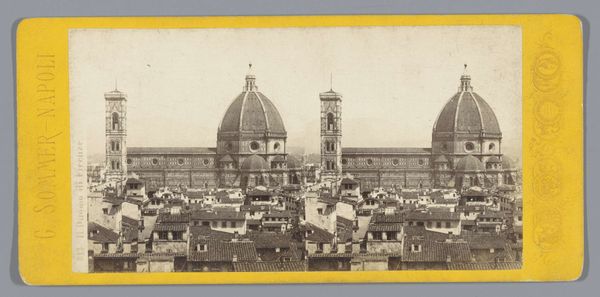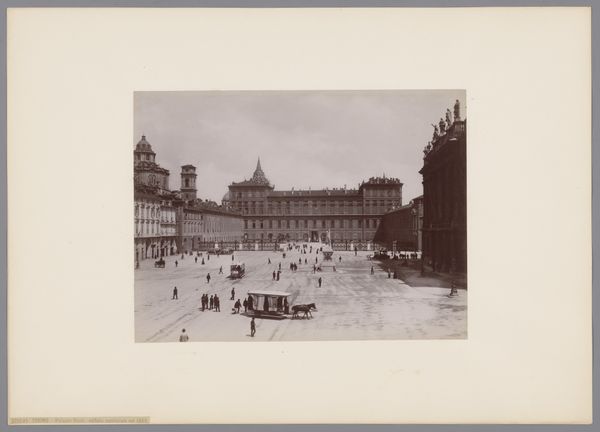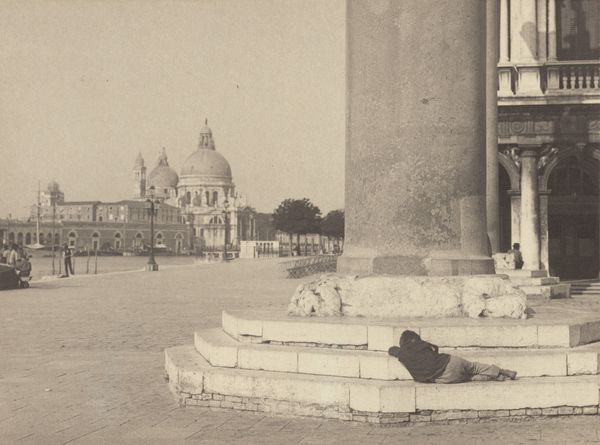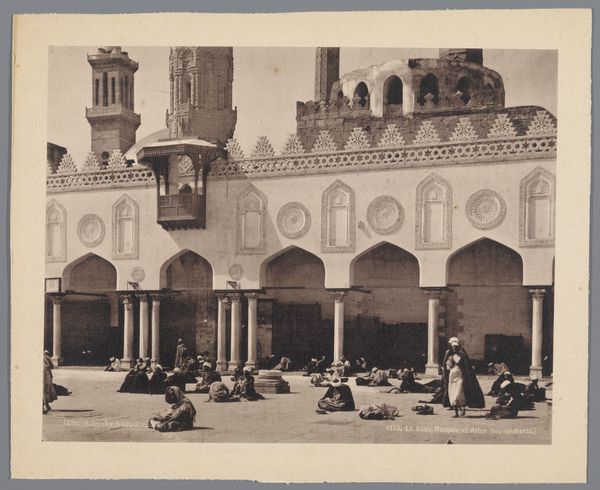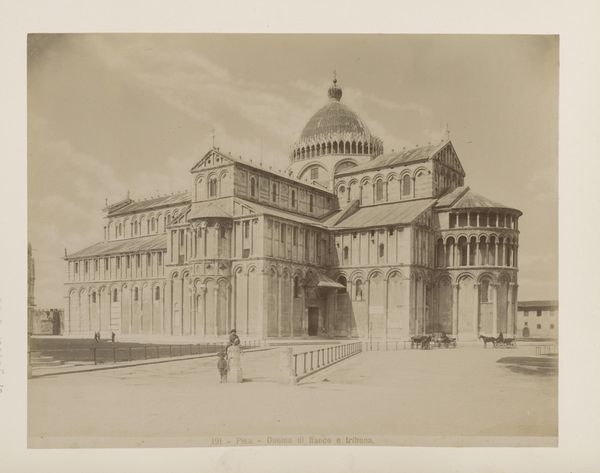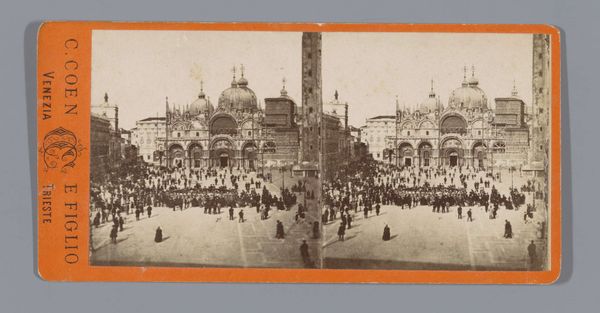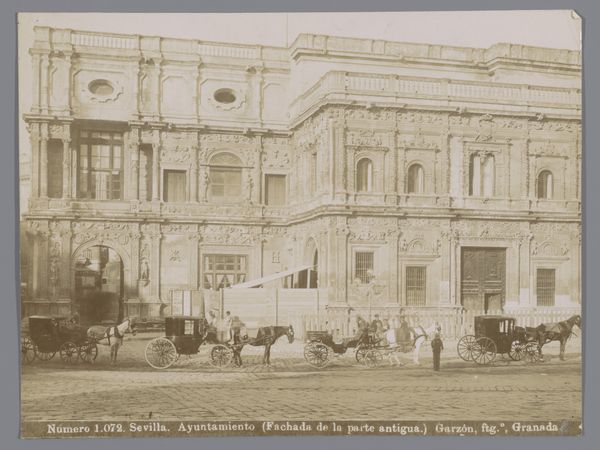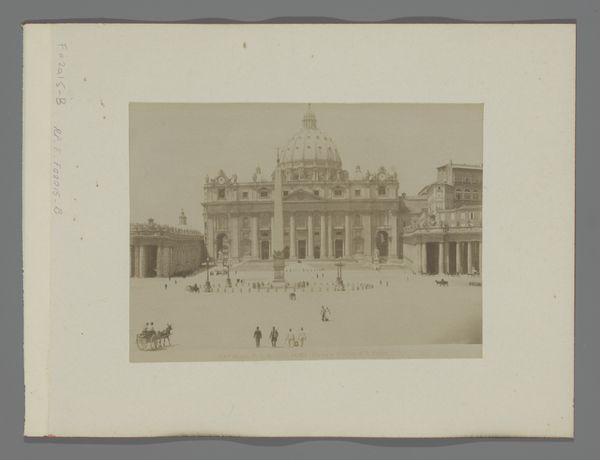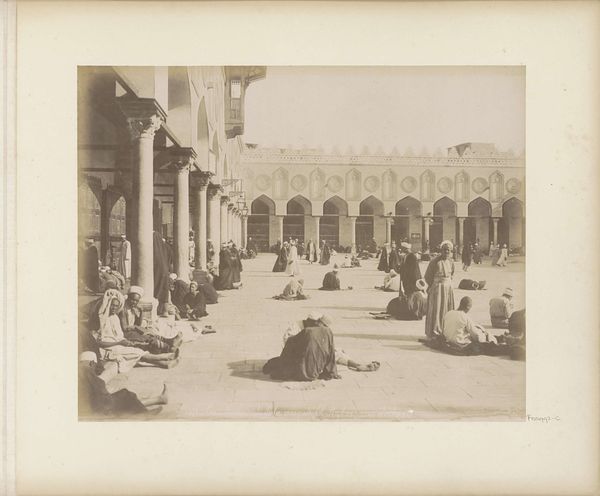
Badgasten op het strand te Scheveningen, met op de achtergrond het Kurhaus before 1891
0:00
0:00
Dimensions: height 96 mm, width 147 mm
Copyright: Rijks Museum: Open Domain
Editor: This photograph, taken by Römmler & Jonas, depicts "Badgasten op het strand te Scheveningen, met op de achtergrond het Kurhaus" before 1891. I'm struck by how rigid and posed everyone looks, despite being at the beach. What does this image communicate to you? Curator: I see a potent visual document reflecting the societal norms and class structures of the late 19th century. The stark contrast between the architectural grandeur of the Kurhaus, a space of leisure for the elite, and the staged interactions on the beach speaks volumes. These 'badgasten,' or bathers, are deliberately performing leisure. How does that performance reflect ideas about identity, or perhaps exclusion? Editor: That’s interesting. I hadn’t considered the performative aspect. The beachgoers almost look like they are on display. Curator: Exactly. Consider the role of photography at that time. It was increasingly accessible, creating both a desire and an anxiety to capture and control one's image. The photo could be considered a tool of social regulation as well as documentation, solidifying hierarchies in spaces that could have potentially been more fluid. Notice the enclosures, these bath chairs or 'beach cabins'. What kind of access do you think all citizens had to those? Editor: Probably very limited. It all seems very controlled and exclusive now that you mention it. Curator: This control, this visual encoding of social strata, speaks to anxieties around changing social landscapes. Recognizing these encoded messages allows us to examine how power operates even in moments of apparent leisure. What do you make of it now? Editor: I will definitely look at these types of scenes differently from now on and focus on whose stories are being told and who might be excluded.
Comments
No comments
Be the first to comment and join the conversation on the ultimate creative platform.
